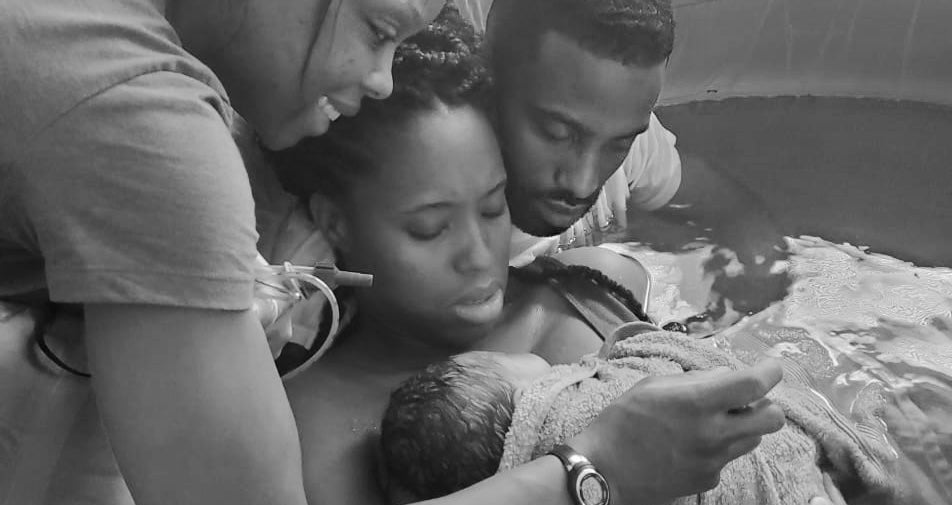
Investing in the Black Midwifery Workforce for Long-Term Sustainability and Impact
Share
Guest post by Star August Ali, Black Midwifery Collective (BMC) Executive Director & Founder, Certified Professional Midwife CPM, LM, ASM, CD
Before there were hospitals, there were midwives, healers held in high esteem for knowledge and skills that went far beyond catching babies. Generations of Black, Indigenous and immigrant people understood the importance of birthing care provided by a member of their own community, someone who shared their everyday experiences, struggles and joys. These midwives were not only respected, their outcomes were exemplary—they solemnly carried the responsibility of upholding the health of their own populace. Birth was a home-centered family event and celebration.
Then came midwifery’s decline, not because midwives could no longer serve, but due to the actions of those seeking power. There was the rise of medical associations, and with it a need to move birth into hospitals, often to provide teaching material for the nascent profession of obstetrics. This need morphed into regulation and surveillance of midwives, along with a public smear campaign. As clinical obstetrics and hospital birth became the norm, midwives—especially women of color—were pushed out and discredited.
Not only did the place of birth change, but so did the public’s attitude toward the process itself. Birth was no longer seen as a normal life event; it was redefined as a medical diagnosis in need of management by experts. Ironically, as more and more interventions were introduced, ostensibly to make birth safer, they did not improve outcomes, particularly for those communities whose traditional midwives had been suppressed. Racism permeated the obstetric culture, eventually blaming poor outcomes on the people themselves.
Then came the rise of those who did not believe this portrayal. As put so eloquently by Khiara Bridges, "We ought to interrogate why the narrative that Black women are dying because they are unhealthy has been as believable as it has been to so many observers.” Midwives began making a comeback in the US. The first wave of this resurgence arose out of the nursing profession, with a push to incorporate nurse-midwives into the prevailing obstetric system and thereby make changes from within. Then, beginning in the 1970’s, was the second wave, which put an emphasis on direct-entry midwifery as a profession distinct from nursing, and on community-based births in homes and free standing birth centers. This midwifery renaissance saw the creation of Certified Professional Midwives (CPMs). In parallel was a movement to reclaim ancestral knowledge, a call for birth justice aimed at honoring midwifery’s roots and expanding access to culturally-congruent care.
The CPM has slowly attained legal recognition; it is currently recognized by 38 states, with efforts underway to legalize CPMs nationwide. Herculean effort has been needed despite demonstration of exemplary outcomes, most likely because its very precepts challenge the prevailing obstetric model of birth. CPMs uphold the idea that community based care grounded in respect is the underpinning of improved care quality. They also recognize that care led by Black and Indigenous midwives is crucial for meeting the needs of these communities; however, just as there is racial stratification within the healthcare workforce as a whole, there are only a small number of CPMs of color in the US.
The CPM profession has been limited by the accessibility of education for entry into the profession. While originally envisioned as providing education that preserved traditional apprenticeship, over the decades this has evolved into a more formalized system of certification and accredited educational programs in order to meet licensing requirements. However the majority of these programs are in stand-alone private schools; students in many of them are not eligible for Title IV funding, FASFA or Pell grants, as some programs are not degree-granting, and only the midwifery programs at Southwest Wisconsin Technical College and Bastyr University are housed within regionally-accredited college systems, thus limiting the articulation of credits attained.
The imperative is to bring affordable, accessible, culturally congruent midwifery education into the communities that need it most. There are groups working to make this a reality. One prominent group is the Black Midwifery Collective | Supporting Black Midwifery, which is working with the City Colleges of Chicago in planning a CPM program slated to open on the south side of Chicago in fall of next year. This program will be placed in the City College with the highest percentage of Black students, in a sector of the city with high maternal and infant mortality but low access to services. Californians for the Advancement of Midwifery are on a parallel track, but focusing on meeting the need in a rural area of the state with a large Hispanic and Indigenous population, with plans to open during the same semester.
Enabling more birthing people to receive care in community birth settings and increasing access to community birth care provided by and for People of Color should be a top priority. Expanding access to care by culturally-congruent providers in their communities is a cost-effective solution to providing higher quality, respectful care and better birth outcomes, and to advancing birth equity.
